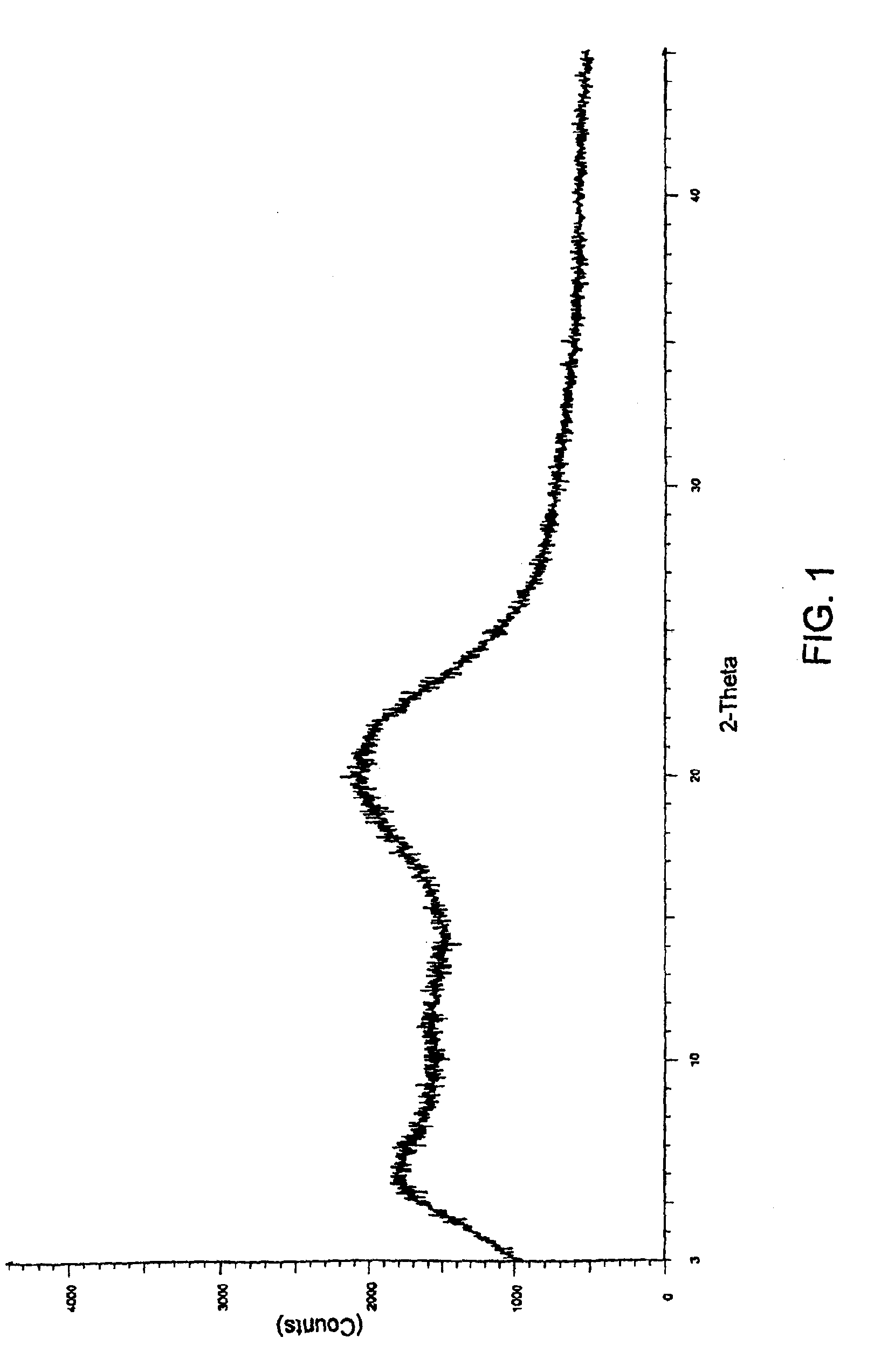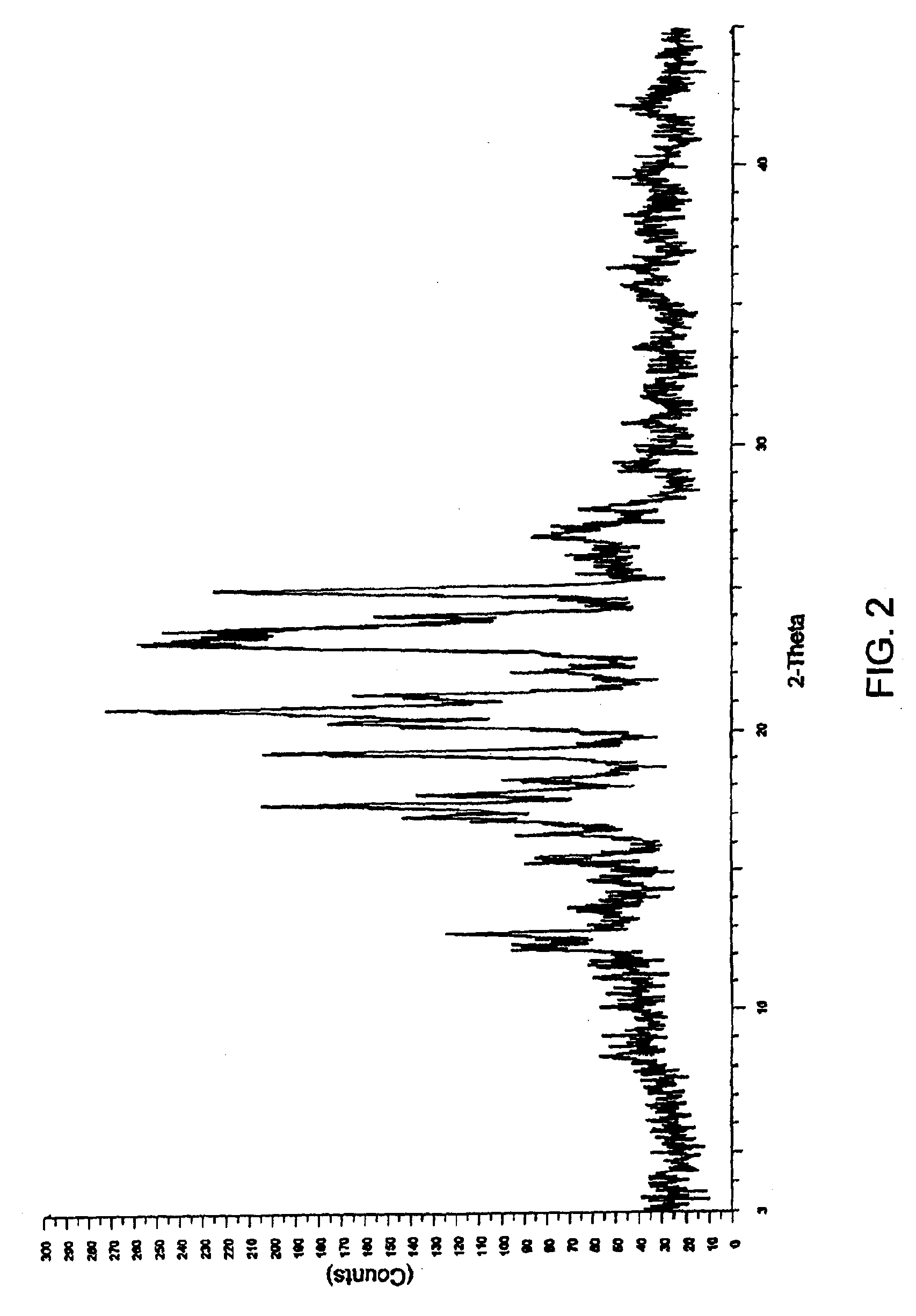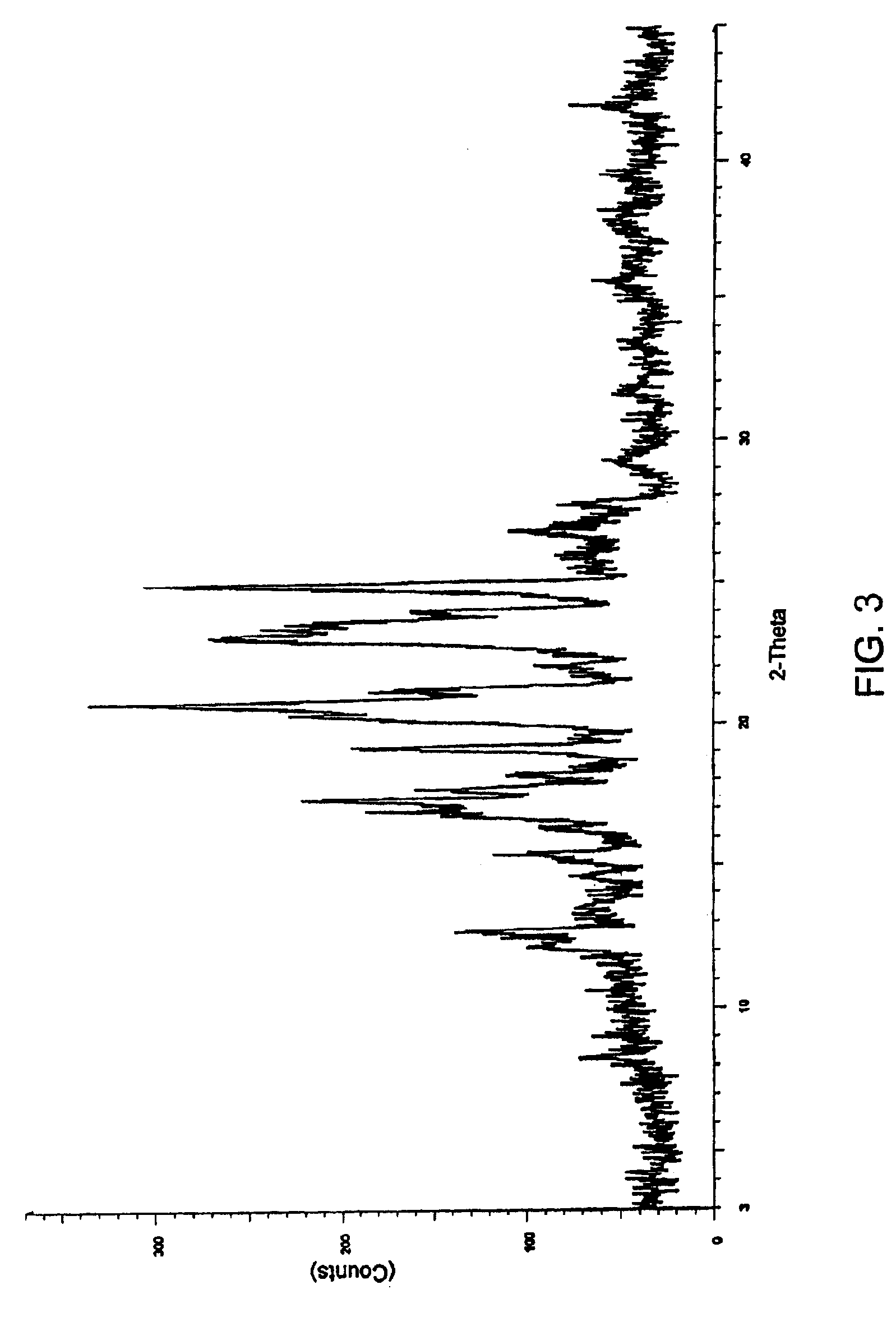Aprepitant compositions
- Summary
- Abstract
- Description
- Claims
- Application Information
AI Technical Summary
Benefits of technology
Problems solved by technology
Method used
Image
Examples
example 1
Preparation of Amorphous Aprepitant
[0085]35 g of aprepitant was dissolved in 300 ml of tetrahydrofuran to get a clear solution. This solution was spray dried using a spray drier (Jay Instruments & Systems Pvt Ltd., India, Model LSD-348-PLC) maintaining the feed rate at 110 ml per hour, aspiration rate at >1600 RPM to maintain negative pressure of 110-130 mm W.C., inlet temperature at 140° C., outlet temperature at 80° C. and atomization air pressure at 2.2 kg / cm2. 20 g of dried substance was collected.
[0086]The XRD pattern of the sample demonstrates the amorphous nature as shown in FIG. 1.
example 2
Coprecipitates of Aprepitant with Polyethylene Glycol
[0087]2 g of aprepitant and polyethylene glycol 6000 (1 g, 0.67 g and 2 g respectively) in different ratios of (2:1, 3:1 and 1:1 w / w) along with dichloromethane (300 ml, 320 ml and 190 ml respectively) were charged into separate round bottom flasks and stirred at a temperature 35-40° C. The mixtures were heated to reflux to obtain clear solutions. The solutions were filtered while hot using a Büchner funnel. The filtrates were transferred into three different Buchi Rotavapor flasks and the solvents were evaporated under vacuum at 45-50° C. to obtain coprecipitates of aprepitant with polyethylene glycol.
[0088]FIGS. 2 through 4 show the respective XRD patterns of these coprecipitates.
example 3
Coprecipitate of Aprepitant with Povidone in a Ratio of 1:1 w / w Using Dichloromethane as the Solvent
[0089]1 g of aprepitant and 1 g of povidone (PVP K30) were dissolved in 200 ml of dichloromethane with the aid of heating to a temperature of 40° C. The solution was filtered in the hot condition and the dichloromethane was removed using distillation in a Buchi Rotovapor apparatus under a vacuum of 0-20 torr. 1.8 g of a dried coprecipitate of aprepitant with povidone was obtained.
[0090]The XRD pattern of the sample demonstrates the amorphous nature of the coprecipitate, as shown in FIG. 5.
PUM
| Property | Measurement | Unit |
|---|---|---|
| Particle size | aaaaa | aaaaa |
| Weight ratio | aaaaa | aaaaa |
| Solubility (mass) | aaaaa | aaaaa |
Abstract
Description
Claims
Application Information
 Login to View More
Login to View More - R&D
- Intellectual Property
- Life Sciences
- Materials
- Tech Scout
- Unparalleled Data Quality
- Higher Quality Content
- 60% Fewer Hallucinations
Browse by: Latest US Patents, China's latest patents, Technical Efficacy Thesaurus, Application Domain, Technology Topic, Popular Technical Reports.
© 2025 PatSnap. All rights reserved.Legal|Privacy policy|Modern Slavery Act Transparency Statement|Sitemap|About US| Contact US: help@patsnap.com



